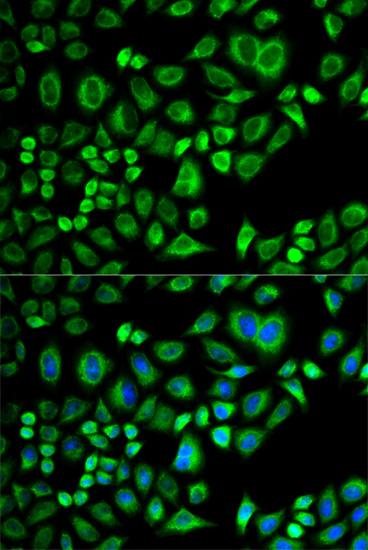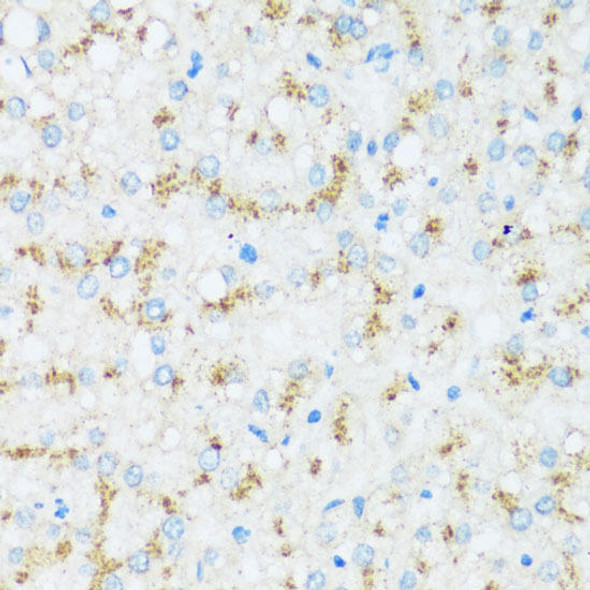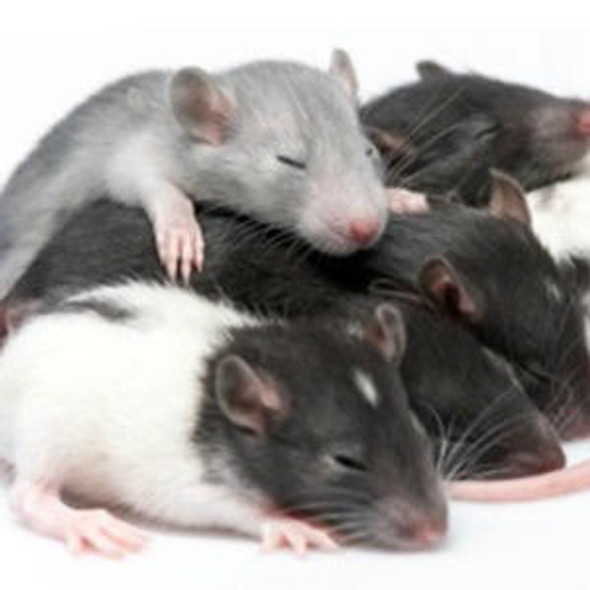Signal Transduction Antibodies 2
Anti-APOD Antibody (CAB5297)
- SKU:
- CAB5297
- Product Type:
- Antibody
- Reactivity:
- Human
- Reactivity:
- Mouse
- Host Species:
- Rabbit
- Isotype:
- IgG
- Research Area:
- Signal Transduction
Description
| Antibody Name: | Anti-APOD Antibody |
| Antibody SKU: | CAB5297 |
| Antibody Size: | 20uL, 50uL, 100uL |
| Application: | WB IF |
| Reactivity: | Human, Mouse |
| Host Species: | Rabbit |
| Immunogen: | Recombinant fusion protein containing a sequence corresponding to amino acids 21-189 of human APOD (NP_001638.1). |
| Application: | WB IF |
| Recommended Dilution: | WB 1:500 - 1:2000 IF 1:50 - 1:200 |
| Reactivity: | Human, Mouse |
| Positive Samples: | A-549, BxPC-3, 293T, M21, Mouse brain, Mouse skeletal muscle |
| Immunogen: | Recombinant fusion protein containing a sequence corresponding to amino acids 21-189 of human APOD (NP_001638.1). |
| Purification Method: | Affinity purification |
| Storage Buffer: | Store at -20'C. Avoid freeze / thaw cycles. Buffer: PBS with 0.02% sodium azide, 50% glycerol, pH7.3. |
| Isotype: | IgG |
| Sequence: | QAFH LGKC PNPP VQEN FDVN KYLG RWYE IEKI PTTF ENGR CIQA NYSL MENG KIKV LNQE LRAD GTVN QIEG EATP VNLT EPAK LEVK FSWF MPSA PYWI LATD YENY ALVY SCTC IIQL FHVD FAWI LARN PNLP PETV DSLK NILT SNNI DVKK MTVT DQVN CPKL S |
| Gene ID: | 347 |
| Uniprot: | P05090 |
| Cellular Location: | Secreted |
| Calculated MW: | 21kDa |
| Observed MW: | 25-32kDa |
| Synonyms: | APOD |
| Background: | This gene encodes a component of high density lipoprotein that has no marked similarity to other apolipoprotein sequences. It has a high degree of homology to plasma retinol-binding protein and other members of the alpha 2 microglobulin protein superfamily of carrier proteins, also known as lipocalins. This glycoprotein is closely associated with the enzyme lecithin:cholesterol acyltransferase - an enzyme involved in lipoprotein metabolism. |
| UniProt Protein Function: | APOD: APOD occurs in the macromolecular complex with lecithin- cholesterol acyltransferase. It is probably involved in the transport and binding of bilin. Appears to be able to transport a variety of ligands in a number of different contexts. Belongs to the calycin superfamily. Lipocalin family. |
| UniProt Protein Details: | Protein type:Lipid-binding; Secreted, signal peptide; Secreted Chromosomal Location of Human Ortholog: 3q29 Cellular Component: cell soma; dendrite; endoplasmic reticulum; extracellular space; perinuclear region of cytoplasm Molecular Function:cholesterol binding; protein binding Biological Process: axon regeneration in the peripheral nervous system; brain development; glucose metabolic process; lipid metabolic process; negative regulation of focal adhesion formation; negative regulation of protein import into nucleus; negative regulation of smooth muscle cell proliferation; response to axon injury; response to drug; response to reactive oxygen species; tissue regeneration |
| NCBI Summary: | This gene encodes a component of high density lipoprotein that has no marked similarity to other apolipoprotein sequences. It has a high degree of homology to plasma retinol-binding protein and other members of the alpha 2 microglobulin protein superfamily of carrier proteins, also known as lipocalins. This glycoprotein is closely associated with the enzyme lecithin:cholesterol acyltransferase - an enzyme involved in lipoprotein metabolism. [provided by RefSeq, Aug 2008] |
| UniProt Code: | P05090 |
| NCBI GenInfo Identifier: | 114034 |
| NCBI Gene ID: | 347 |
| NCBI Accession: | P05090.1 |
| UniProt Secondary Accession: | P05090,Q6IBG6, B2R579, D3DNW6, |
| UniProt Related Accession: | P05090 |
| Molecular Weight: | 21,276 Da |
| NCBI Full Name: | Apolipoprotein D |
| NCBI Synonym Full Names: | apolipoprotein D |
| NCBI Official Symbol: | APOD |
| NCBI Protein Information: | apolipoprotein D |
| UniProt Protein Name: | Apolipoprotein D |
| Protein Family: | Apolipoprotein |
| UniProt Gene Name: | APOD |
| UniProt Entry Name: | APOD_HUMAN |
View AllClose








